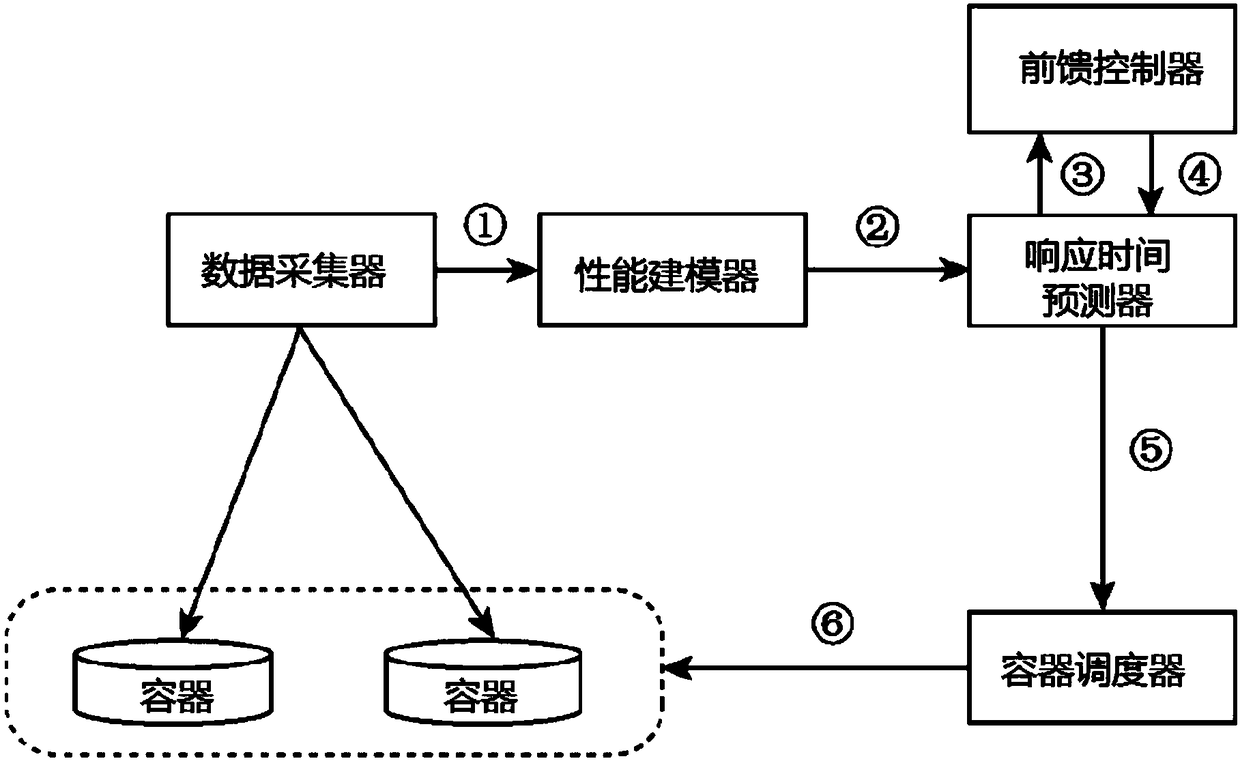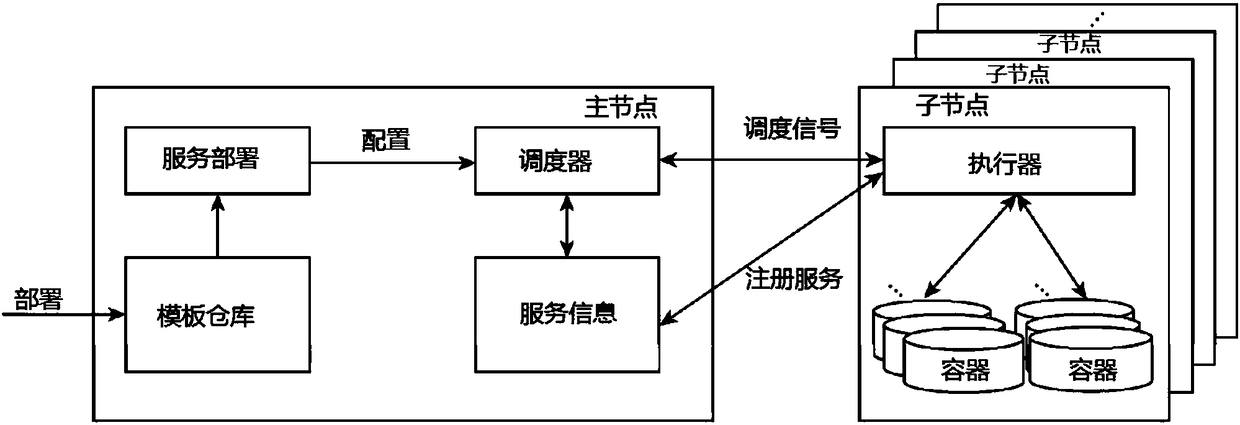Docker self-adaptive scheduling system with task sensing function
A scheduling system and self-adaptive technology, applied in the field of cloud computing, can solve problems such as sudden loads that cannot be solved, and achieve the effect of improving prediction accuracy and effectiveness
- Summary
- Abstract
- Description
- Claims
- Application Information
AI Technical Summary
Problems solved by technology
Method used
Image
Examples
Embodiment Construction
[0033] The overall framework and process of the task-aware Docker adaptive scheduling method of the present invention are shown in the accompanying drawings figure 1 As shown, this method builds a task-aware model based on parameters such as the resource usage rate and load of each microservice, uses the adaptive Kalman filter to predict the service response time, and adjusts the prediction model in real time through fuzzy logic. Whether the service quality is breached is used as the container scheduling standard to achieve the purpose of resource elastic supply.
[0034] The process flow of the task-aware Docker adaptive scheduling method of the present invention can be described as:
[0035] ① The data collector collects the load of each container and the utilization rate of system resources such as CPU and memory;
[0036] ②Based on queuing theory, the performance modeler uses the resource usage rate in step ① as a benchmark to build an application performance model and de...
PUM
 Login to View More
Login to View More Abstract
Description
Claims
Application Information
 Login to View More
Login to View More - R&D
- Intellectual Property
- Life Sciences
- Materials
- Tech Scout
- Unparalleled Data Quality
- Higher Quality Content
- 60% Fewer Hallucinations
Browse by: Latest US Patents, China's latest patents, Technical Efficacy Thesaurus, Application Domain, Technology Topic, Popular Technical Reports.
© 2025 PatSnap. All rights reserved.Legal|Privacy policy|Modern Slavery Act Transparency Statement|Sitemap|About US| Contact US: help@patsnap.com



